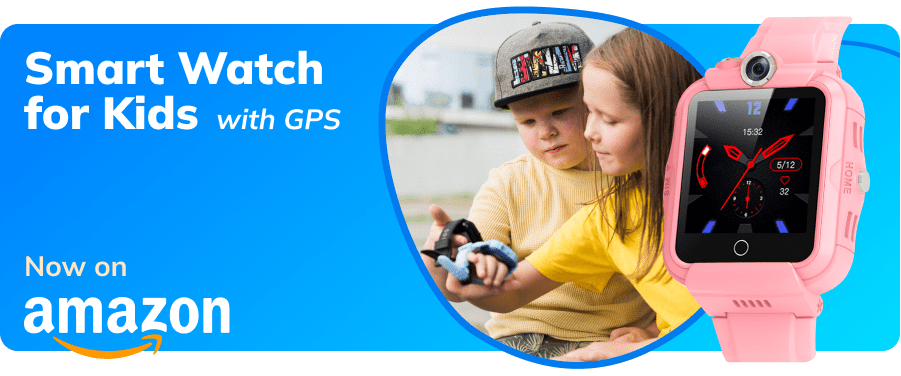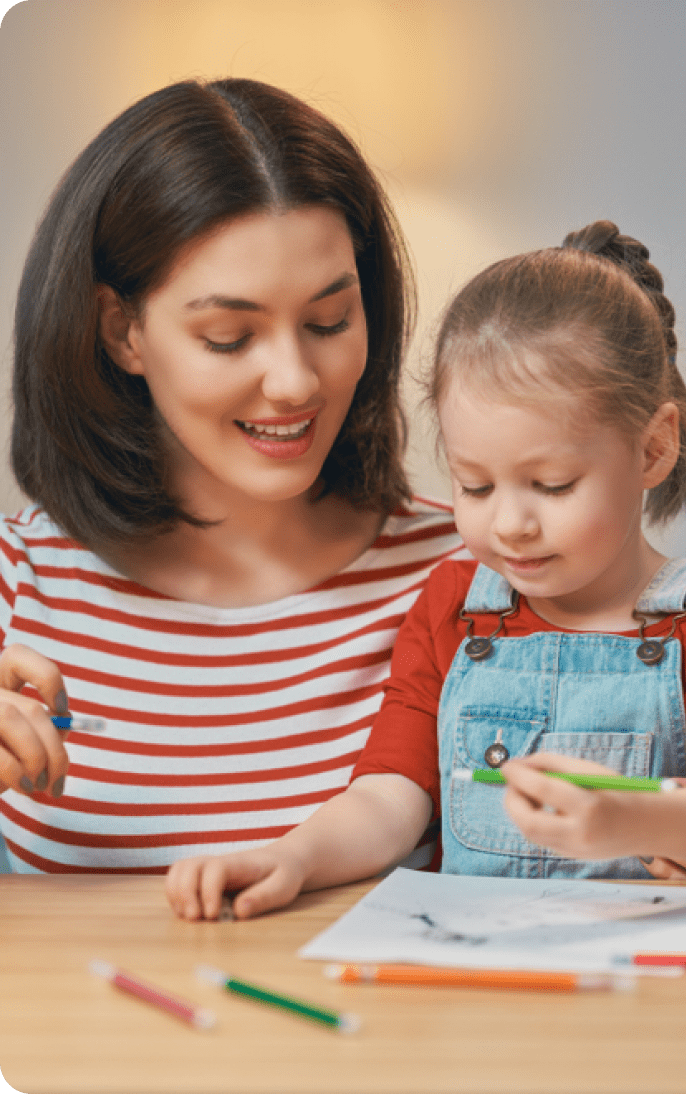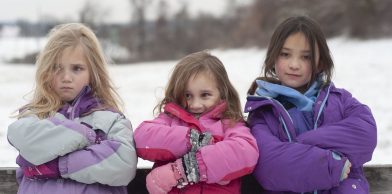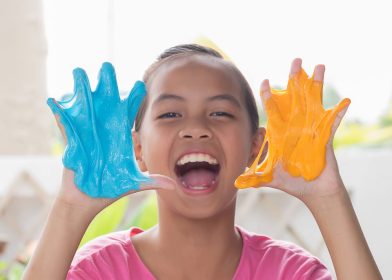Pleasant winter walks: cold-weather dressing tips for kids
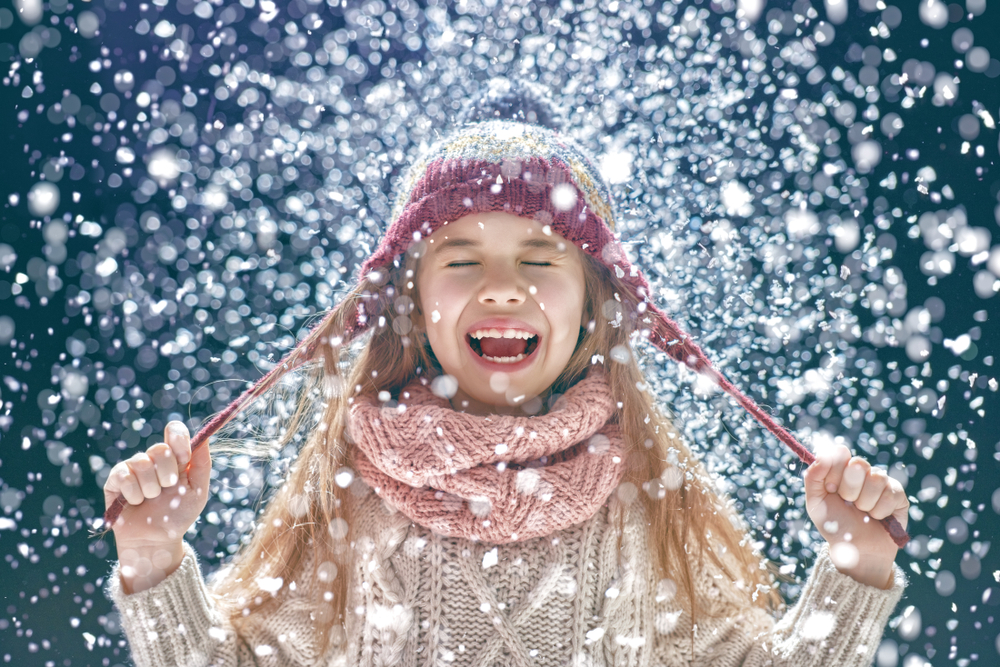
Pediatricians do not agree over many matters, which results in completely different recommendations on nutrition, daily routine, and norms for the development of the child, that can be spotted. Nevertheless, there is a rule regarding which the opinion of all doctors is the same: at any age, the child needs to spend as much time as possible outdoors. This also applies to the cold season – even if you live in a place with harsh winters, the main thing is to know how to dress your child in winter so that they do not get cold or overheat.
Winter walks are highly beneficial for the child’s health: they strengthen the immune system, thus reducing the risk of getting sick, and help to set a daily routine and expand the baby’s horizons. However, parents – especially young ones – often deprive their son or daughter of the joy of winter walks because they do not know what to dress their child in or because they are afraid that their child will catch a disease. In fact, there is nothing to be afraid of – it is enough to know how to properly dress a child for a walk, focusing on weather conditions. This would allow to fully enjoy the fun and benefits of the walk, even if the temperature outside is super low!
Don’t worry about your child when they are in kindergarten. Make sure that they are doing well, that they have no adjustment problems, and that they are not bullied. Buy a children’s GPS watch with a LIVE-listening function on our official website and get a complimentary “Findmykids” license. Double your savings!
Сontents:
- How to choose the right winter clothing for the child: tips and details
- The layering principle
- How to dress the child in winter
- How to understand if the child is not dressed appropriately
- Winter footwear
- Tips for parents
How to choose the right winter clothing for the child: tips and details
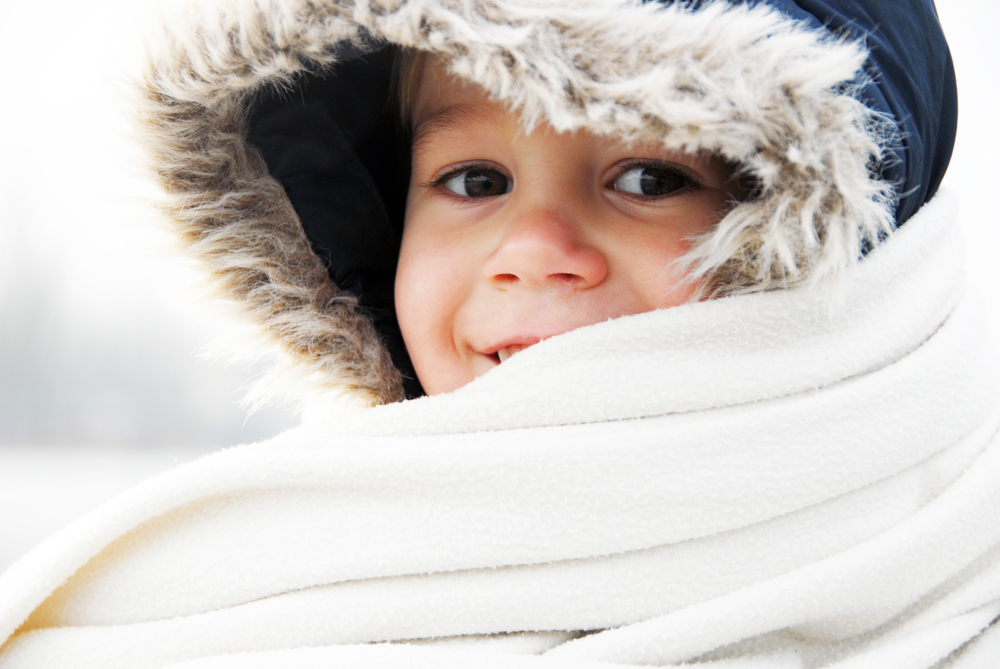
Prostock-studio/Shutterstock.com
How to choose the right winter wear for the child. Below are some carefully chosen simple rules and tips:
Coats and overalls
When deciding how to dress a child in winter, most mums and dads start by choosing a coat or overalls. These are very important indeed, hence the offering of such items of outerwear for children in stores is very large, potentially making it difficult to understand the differences and to select the right one.
When choosing a coat or overalls, pay attention to the heat insulation. The best modern option is membrane clothing, which should be less protective than natural insulation in terms of its ability to keep warm and unlike natural materials and cheap synthetics, should repel moisture perfectly, is breathable, and does not crumble. The extent of heat protection is indicated on the membrane multiporous clothing label: opt for the 200-250 grams if the temperature in your region does not drop below -25°C in winter, or more than 280 grams for very cold winters.
Winter trousers
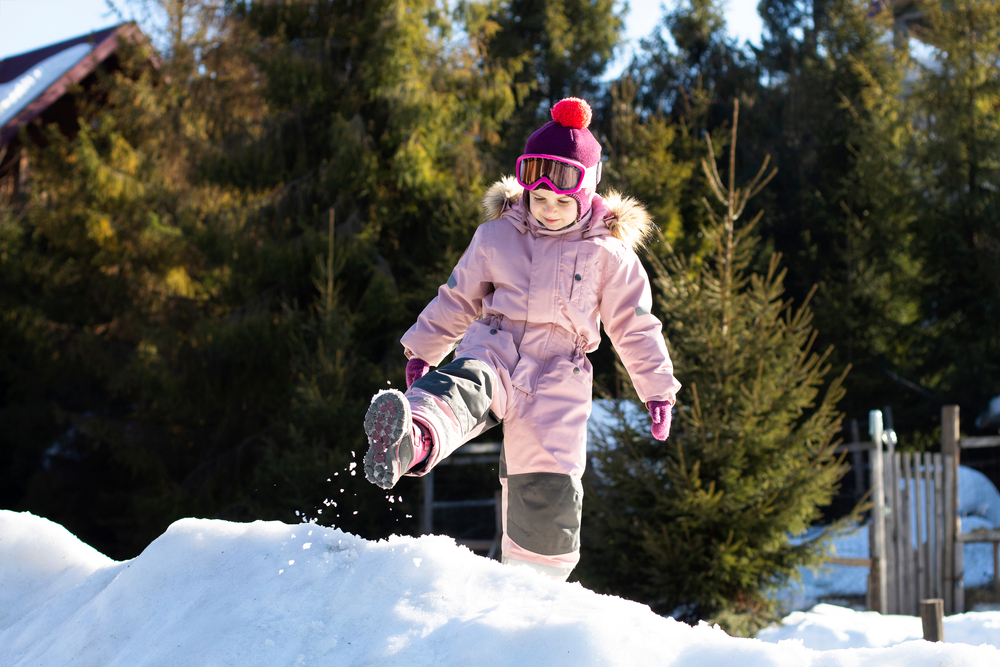
Prostock-studio/Shutterstock.com
Winter pants, those that come with the overalls, or the ones that you buy separately are less insulated than coats made by the manufacturers. To make your child comfortable on the street, choose membrane pants with heat insulation 1.5-2 times less than a jacket. These trousers keep warmth efficiently and do not get wet. Another advantage of membrane pants over pants made of other materials is that they repel dirt well, so even if a child gets dirty, the stains could be easily wiped off with a paper towel.
Headwear
The most comfortable headwear for children under the age of 5-6 years old are balaclavas, or, as they are also called, helmet hats. They protect the head and face from the cold very efficiently, whilst leaving the eyes and sometimes the mouth, both uncovered. For an older preschooler or a schoolchild, you can choose the one that will both be enjoyable to wear and will protect from harsh weather conditions. It can be at the same time fashionable, warm, and of the right size, fitting the child perfectly.
Gloves and mittens
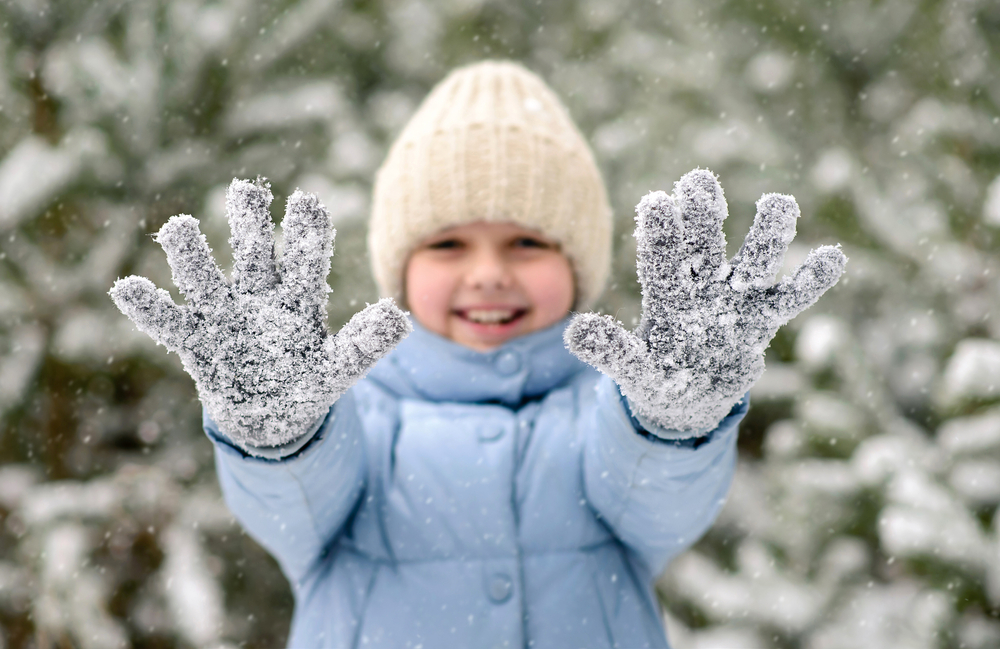
Prostock-studio/Shutterstock.com
Children’s hands also require special protection from the cold and wind: it will be more convenient for preschoolers to wear mittens during a walk in order not to waste time with gloves. Gloves are more suitable for schoolchildren on the street. With them, it is more convenient, for example, to put on a backpack, to go on a swing, or to get a phone or keys out of the pocket.
Opt for waterproof and warm gloves made of synthetic materials. If you prefer natural materials, stock up on several pairs of gloves or mittens at once, so that they can be easily replaced when the first pair gets wet.
Footwear
It is advisable to purchase at least two pairs of shoes: one for the warmer and slushy weather, and the other for a real frosty winter.
How to dress the child according to the layering principle

Prostock-studio/Shutterstock.com
It is better to dress children of any age according to the principle of layering. A child dressed in 3-4 layers of clothing is more comfortable in their movements than a child in one very warm coat, which does not allow them to turn quickly or to bend over. In addition, if they wear multiple layers of clothing in winter, the child is less likely to overheat and to get a cold.
The number of layers of winter clothing for a baby depends on the age of the child and on how cold it is outside. Children under the age of one year old are usually dressed in 4 layers, and those who have already learned to walk, in 3 layers. If you are in doubt about how many layers you need to put on your child before going out, follow the rule of “dressing like yourself with an addition of one extra layer”.
How to dress the child correctly according to the layering rule:
- The first layer for children over one-year-old is a thin t-shirt made of semi-synthetic or synthetic fabrics with long sleeves or special thermal underwear for children. It is not worth choosing cotton underwear for active children. Despite all the advantages of natural materials, a child in a cotton t-shirt will quickly sweat and will be cold due to the fact that this material absorbs moisture well but does not let it evaporate. For babies who do not walk yet, cotton bodysuits and undershirts, on the contrary, are the best option for the first layer as cotton does not affect sensitive skin.
- The second layer for children over a year old consists of sweaters and sweatshirts made of wool, fleece, or other dense fabric that are not too tight to the body. Warm suits and overalls work well for babies.
- The third layer is a winter membrane jacket or overalls for children of any age.
- The fourth layer for children under one year old can be a warm blanket, which you can take with you from home, and add an extra cover for the baby, should this be necessary.
How to dress the child in winter
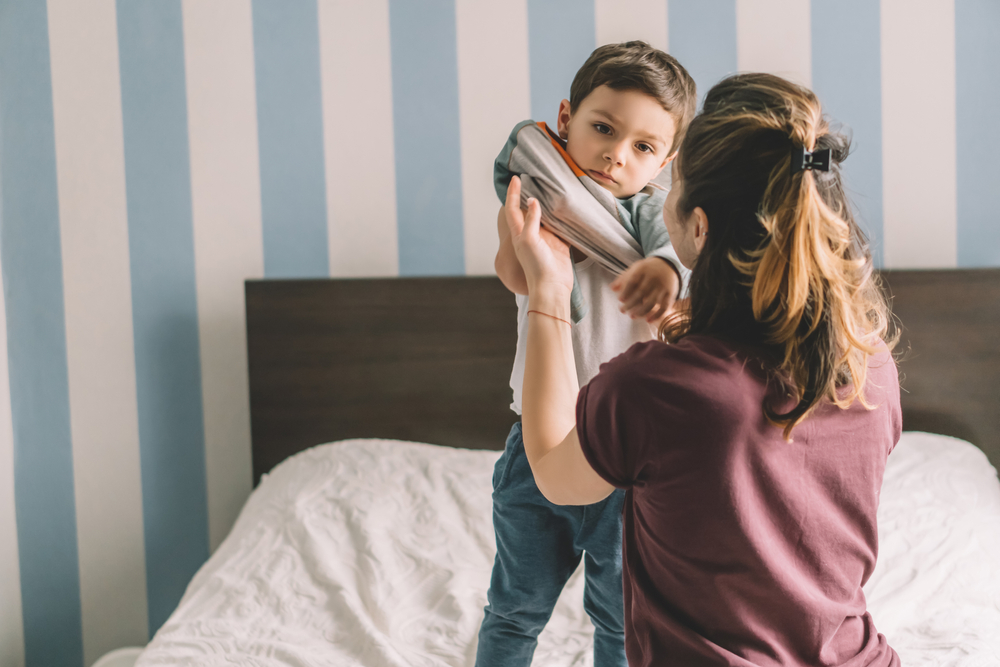
Prostock-studio/Shutterstock.com
Winter is a contrasting time of the year: in December, it can rain, with the temperature being above zero degrees, whereas in January all of the streets may be covered in snow, indicating the start of more frosty weather. The two main factors that need to be considered before dressing a child for a walk in the winter are the weather outside and the age of the boy or girl. Without any doubt, dressing a practically immobile newborn and a restless kindergartner needs to be done very differently.
How to dress the newborn in winter: for first outings and walks
When discharged from the hospital, young mothers do not have to dress the newborn on their own, the newborn is fully prepared by the medical staff. This is a big advantage, especially in winter, that is great for inexperienced mothers that may find it quite difficult to dress a newly born baby properly.
But parents will still have to pack all the clothes needed for the baby. Here is what exactly required in order to dress a newborn in winter for discharge:
- a disposable diaper, and a couple more on the side just in case;
- a thin cotton bodysuit: in the case of a baby who was born a few days ago, it is better to avoid synthetics – unnatural materials can irritate the baby’s delicate skin;
- mittens, if the jumpsuit does not cover the baby’s hands; dense bodysuit made of fleece or velour – a beautiful and practical version of it can be chosen;
- one thin and one warmer hat, for the outside and the inside layers;
- warm winter jumpsuit: it is better to immediately opt for a larger size, For example, for the height of 62 cm, if at birth the baby’s was measuring 50 cm or more, or otherwise the child will be able to carry the jumpsuit for more than a month;
- a winter cover specially designed for newborns or a warm blanket;
- thin and dense socks.
If the newborn is healthy and there are no contraindications from the pediatrician, you can go for the first walk in winter ten days after discharge. On the street, a newborn should be in the stroller at all times without moving too much, and you need to dress the baby with at least one extra layer than yourself.
How to dress the newborn for their first and all of the following walks:
- first layer: a diaper, a thin long-sleeved bodysuit or a cotton undershirt and a thin hat;
- second layer: tight suit or jumpsuit – knitted or fleece;
- third layer: winter overalls or an envelope covering the arms and legs, a warm winter hat.
How to dress the child for a walk according to the age and the outside temperature
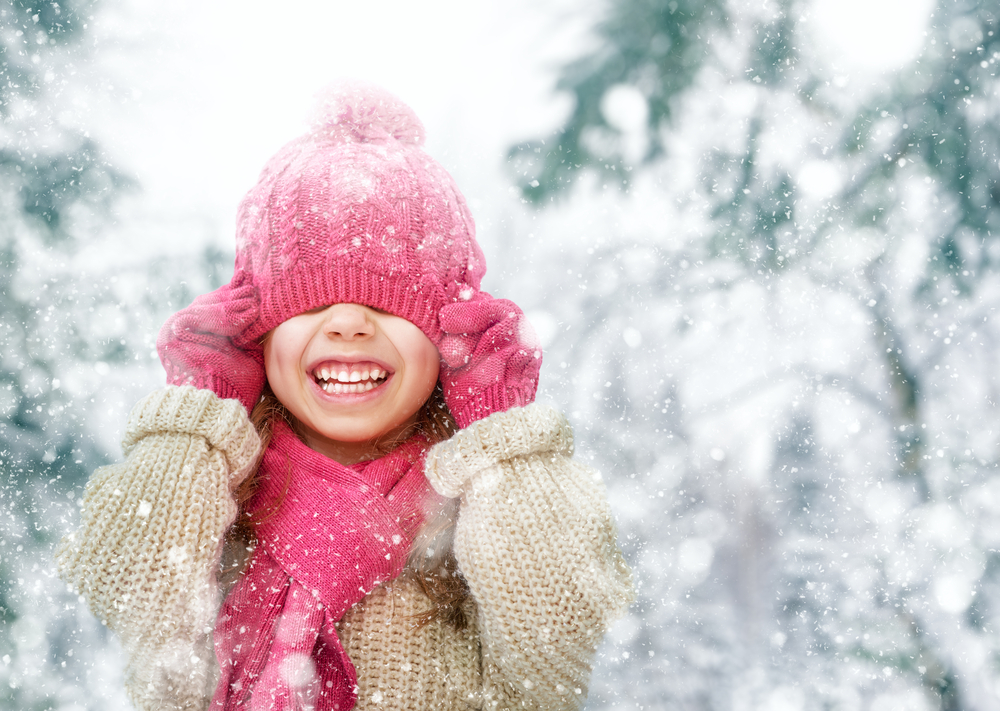
Prostock-studio/Shutterstock.com
A child over one-year-old that actively moves, plays and learns in various ways, needs to dress completely differently than a baby: outerwear should not be hindering movement, shoes will need to be worn, however, the fourth thermal insulating layer will not be needed at this point.
How to dress children of different ages depending on the temperature outside:
1-3 years old
Outside temperature -5…+5 ˚С
Semi-synthetic or synthetic long-sleeved t-shirt, a sweater made of viscose or acrylic with wool, a jumpsuit that can be fully unbuttoned, with 200-250g thermal insulation, warm hat, and snow boots.
-5…-15 ˚С
Semi-synthetic or synthetic long-sleeved t-shirt, a sweater made of viscose, wool with synthetics, overalls with 250g thermal insulation, winter hat, quilts or felt boots.
Below -15 ˚С
Thermal underwear, a jacket made of wool or wool with synthetic material, overalls with 280-400g thermal insulation, warm hat, soft boots.
3-5 years old
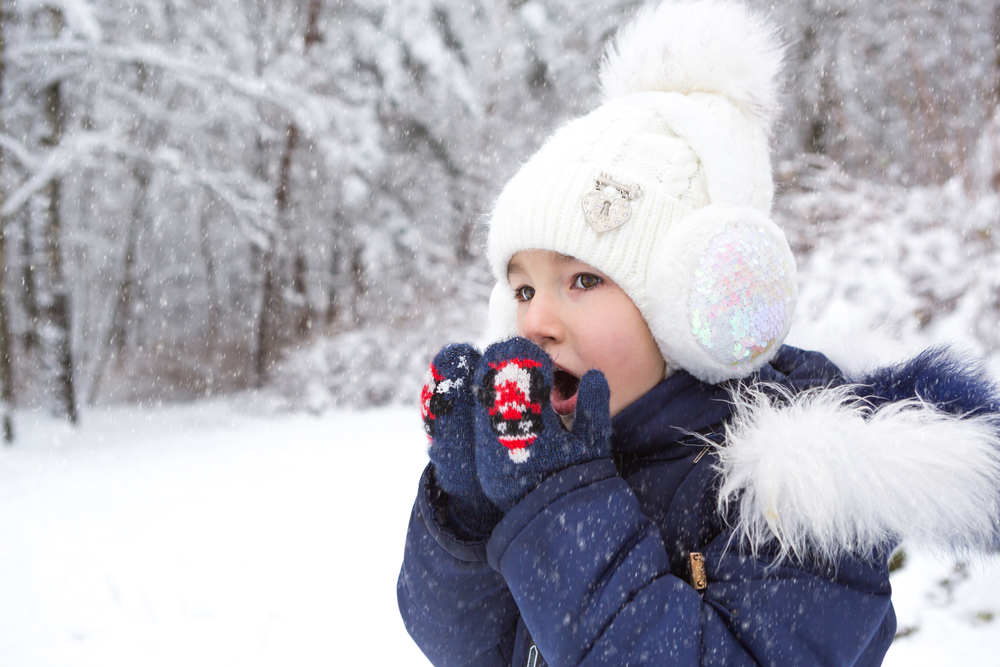
Prostock-studio/Shutterstock.com
-5…+5 ˚С
Thermal underwear, a sweater made of viscose, wool, or wool with synthetic material, overalls with thermal insulation up to 250g, medium-density hat, snow boots.
-5…-15 ˚С
Thermal underwear, a sweater made of viscose, wool, or wool with synthetic material, overalls or a set of jacket and pants with a 250g insulation, winter headwear, quilts, or soft boots.
Below -15 ˚С
Thermal underwear, a jacket made of wool or wool with synthetic material, overalls or jacket and pants with 280-400g thermal insulation, warm hat, boots.
5-7 years old
-5…+5 ˚С
Thermal underwear, a sweater made of viscose or synthetic material, overalls or coat and pants with the 200g thermal insulation, medium-warmth hat, snow boots.
-5…-15 ˚С
Thermal underwear, a jacket made of viscose, wool, or synthetic material with wool, a set of jackets and pants with 250g thermal insulation, a winter hat, quilts, or soft boots.
Below -15 ˚С
Thermal underwear, wool or wool sweater with synthetic material, jacket, and pants with 280-400 g thermal insulation, warm hat, boots.
Older than 7 years old
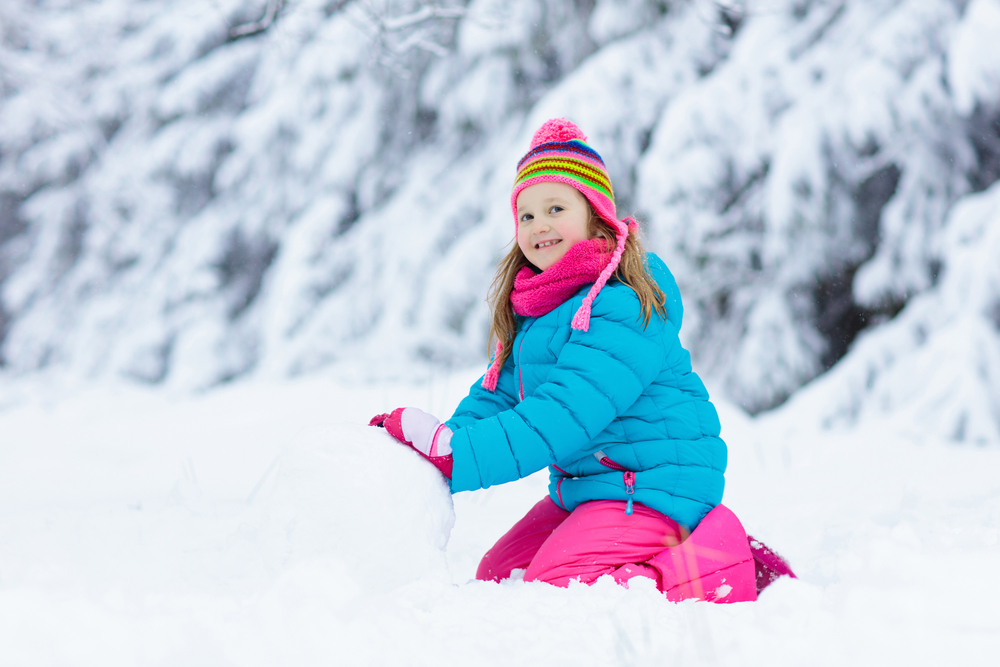
Prostock-studio/Shutterstock.com
-5…+5 ˚С
Thermal underwear, synthetic material sweater, jacket and pants with 200 g thermal insulation, medium-warmth hat, snow boots.
-5…-15 ˚С
Thermal underwear, sweatshirt of viscose or synthetic material with wool, jacket, and pants with 250g thermal insulation, warm hat, boots.
Below -15 ˚С
Thermal underwear, wool or wool sweater with synthetic material, jacket, and pants with 280-400g thermal insulation, warm hat, soft boots.
How to dress a child for kindergarten in winter
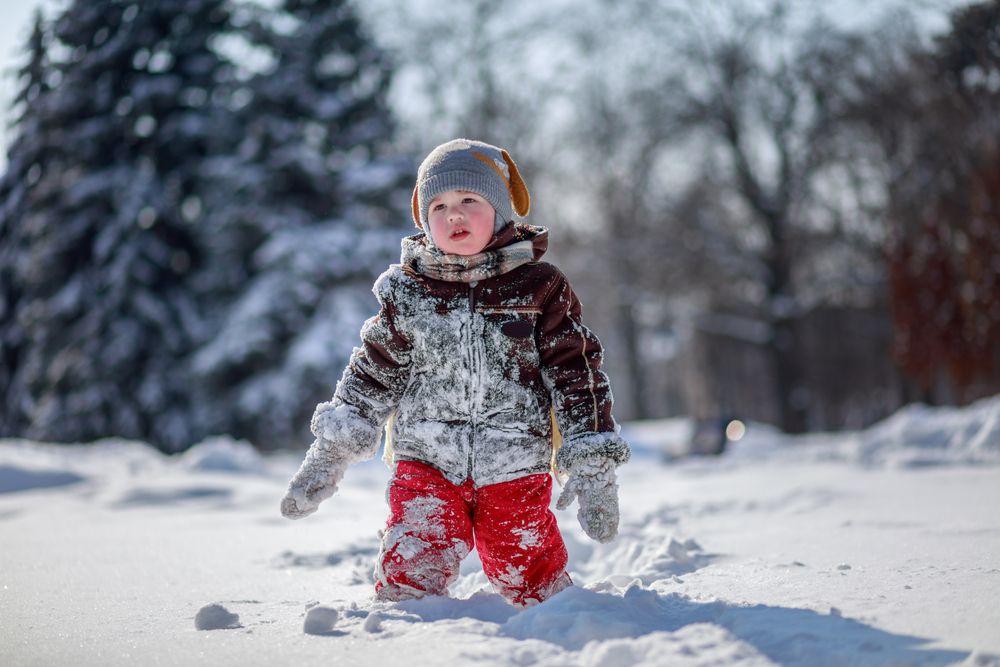
Prostock-studio/Shutterstock.com
In kindergarten, there are twenty or more children in the group, and it is difficult for the teacher to make sure that each child is dressed properly before going on a walk. Therefore, for a child attending kindergarten, the ease of getting dressed is especially important: there should be easy fasteners on the coats, trousers, and other clothing items, which will allow the child to cope with it with the help of an adult.
How to dress a child in kindergarten in winter so that they are comfortable and warm:
- do not choose one-piece overalls for the kindergarten, a separate set of a coat and trousers is much more preferable. The best color to be chosen should be practical and the should not get dirty easily, as a child is likely to get dirty during a walk;
- it will be convenient for the baby to put on loose, not too tight-fitting clothes without buttons, complex buckles, and fasteners;
- direct your attention to the shoes: regular or soft boots with laces will be difficult for a small child to put on on their own, choose models with Velcro stick-ons or buttons;
- wear sweaters made of fleece or other warm materials with a minimum of fasteners under a warm jumpsuit;
- thermal underwear or a long-sleeved t-shirt can be used as underwear, and warm tights can be worn underneath trousers;
- remind the child that they need to put on warm socks on top of the thinner ones before the walk;
- the hat should be easy to put on – choose a model without strings or a hat-helmet for the kindergarten;
- the best option for protecting children’s hands from the cold while walking in the kindergarten are fluffy mittens or gloves, they keep the heat well, do not let moisture through, and are easy to put on;
- put spare mittens and a scarf in the child’s locker – these are the things that are most often lost on walks in child care facilities.
Don’t worry about your child when they are in kindergarten. Make sure that they are doing well, that they have no adjustment problems, and that they are not bullied. Buy a children’s GPS watch with a LIVE-listening function on our official website and get a complimentary “Findmykids” license. Double your savings!
How to understand that the child is not dressed appropriately
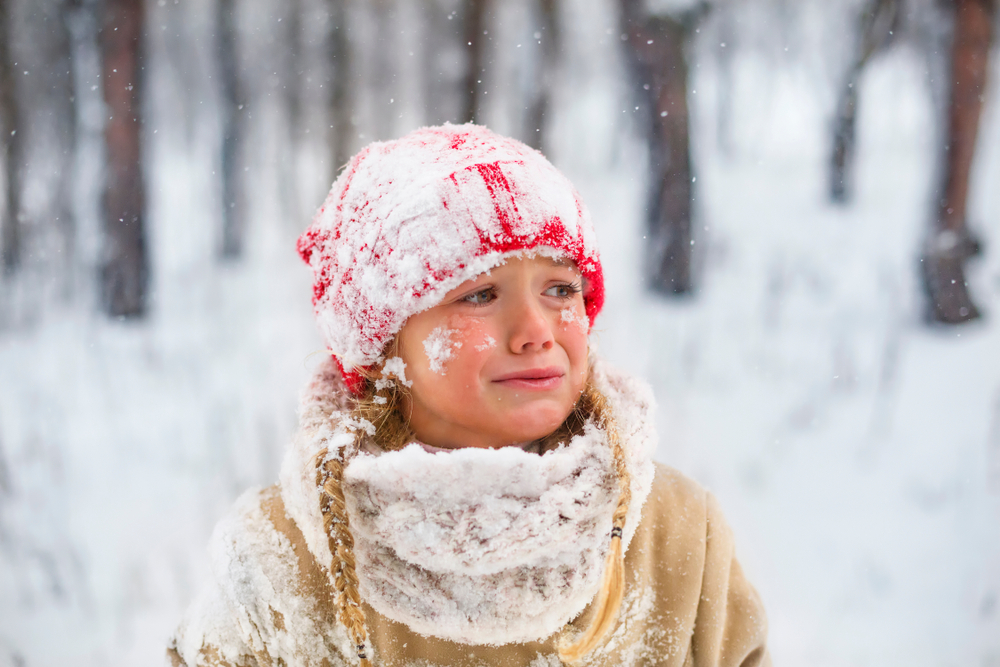
Prostock-studio/Shutterstock.com
You will be able to understand that your child is cold or overheated, according to certain signs:
- Touch the hands and, if possible, the baby’s feet – if they are cold, then the child is cold. Put a pair of spare socks on your child or cover them with a blanket if they are in a stroller.
- Other signs that the child is cold are the following: whims for no apparent reason, lethargy, a pale face. In these cases, it is better to immediately take your son or daughter to a warm place.
- If you notice that the child is flushed and sweating, it is most likely that the child is overheated. Return home before the sweaty child starts to get cold.
- When a child is constantly thirsty, they are probably too hot. If possible, remove their excess clothing off and continue the walk.
Winter footwear

Prostock-studio/Shutterstock.com
One pair of shoes for the wintertime is unlikely to be enough. For slushy rainy days, prepare your child’s snow boots or foam boots: these shoes are made from thermo material that is additionally insulated, allowing the child’s feet to remain dry and warm.
For the cold winter, the most suitable would be membrane or leather boots with fur, felt boots, or ugg boots.
What should the attention be directed towards when choosing the child’s footwear:
- shoes should fit the size of the child, not to be too large or too small: check if the baby can move their toes freely when they are wearing those shoes, however, ensure that is no risk that the shoes or boots will suddenly fall off their feet;
- choose models without laces, with simple fasteners;
- check the sole: in good shoes, the sole should be flexible, and not slippery for the child- there should be a certain drawing on the sole that would increase their stability;
- a removable insole is an additional advantage for winter shoes;
- try to choose models of a known manufacturer. If you hear the brand name for the first time – do not hesitate to ask the seller for a quality certificate.
Tips for parents
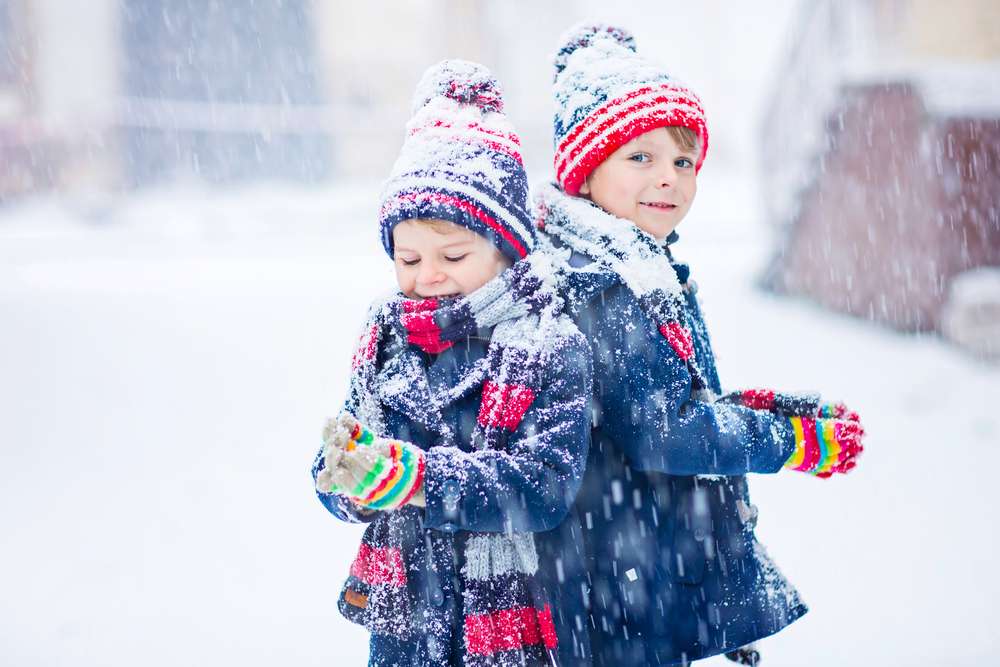
Prostock-studio/Shutterstock.com
If you are still inexperienced in winter walks with children, use the following tips provided by other parents:
- before going outside, prepare everything you need in advance and fully dress yourself and then the child – this way the baby will not overheat while waiting for mom or dad to get ready;
- when going outside is not an option, you can limit yourself to a walk on a balcony with a stroller;
- apply some children’s cream on the baby’s face 10-20 minutes before leaving the house.
Read about the Child safety in the wintertime: the most important rules of conduct and tips for parents!
When going on a walk, grab the following to take with yourself:
- a raincoat for the stroller in case that there is some wet snow;
- a cover for the legs if the baby is going for a walk in a sled;
- wet wipes;
- pacifier and diapers for the most little ones;
- snow saucer for winter games, a spare pair of mittens for older children;
- a bottle of warm water.
Winter walks strengthen the immune system and improve mood for both children and adults in the most efficient way. Do not be afraid of winter, select the appropriate clothing for the weather, and don’t forget to have fun with your child!
Проверьте электронный ящик

